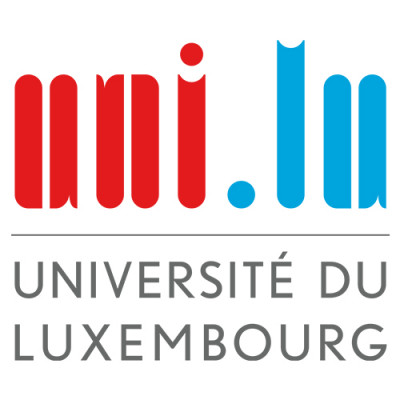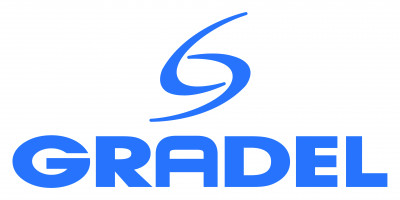PhD in Visual SLAM for construction
Veröffentlicht am 02/06/2024

Université du Luxembourg
About the SnT
The Interdisciplinary Centre for Security, Reliability and Trust (SnT) was created in 2009 as the first interdisciplinary research center at the UL to fuel the development of high-value ICT services and applications through cutting-edge research and supply competent people for building this sector of the economy. The Centre aims to achieve high impact and excellence beyond the academic community by collaborating with external partners such as industries, government bodies, institutions, and international actors.
The Automation & Robotics Research Group (ARG), headed by Prof. Dr. Holger VOOS, comprises around 15-20 team members (PhDs and PostDocs) and conducts research around the three research lines: (1) situational awareness for robots and autonomous systems, (2) optimization-based approaches for planning and decision-making, and (3) advanced control and novel actuators. These research lines are transversally used in four application areas, namely autonomous robots (both aerial and ground), Industry 4.0, space systems, and energy systems. The ARG has several robotics labs that feature an indoor experimental arena with a motion capture system and count with a variety of ready-to-use fully equipped robotic platforms, such as more than 20 multi-rotor aerial robots, two fully-equipped four-legged walking robots (i.e. Boston Dynamics Spot and Unitree Go1), several humanoid robots, a couple of industrial robot manipulators, and two fully equipped cars for autonomous driving.
Dr. Jose Luis SANCHEZ-LOPEZ, Research Scientist (Permanent) and co-head of the ARG. His main research interest is to provide robots (both individually and in teams) with a deeper understanding of the situation and with intelligent and autonomous planning and task execution. He has published more than 80 papers in international peer-reviewed conferences and journals that generated an impact of more than 2050 citations (according to Google Scholar). Among his multiple scientific roles, he is an associate editor of four journals, including IEEE Robotics and Automation Letters.
Learn more about:
- The UL: https://www.uni.lu/en/about/profile/
- The SnT: https://www.uni.lu/snt-en/
- The ARG: https://www.uni.lu/snt-en/research-groups/arg/
- Jose Luis SANCHEZ-LOPEZ: https://joselusl.github.io/
Your Role
The successful candidate will join the Automation & Robotics Research Group (ARG) to pursue a Ph.D. degree (Doctorate) in Computer Science and Computer Engineering (CSCE) under the supervision of Dr. Jose Luis SANCHEZ-LOPEZ.
The position holder will work under the umbrella of a partnership project Theia with the Luxembourg-based company GAMMA AR, developing a solution for real-time vision-based Simultaneous Localization and Mapping (SLAM) of a hand-held tablet on real construction sites (i.e. as-built), with drift-free alignment with existing Building Information Management (BIM) data (i.e. as-planned). This solution will extend our novel Situational Graphs (S-Graphs), concretely our Informed S-Graphs and our Vision-based S-Graphs. Concretely, the main scientific challenges are the (1) vision-based global localization of the hand-held device within BIM (i.e. global alignment between the real construction site and the BIM) when the main structural elements (e.g. walls) are built and there are no major deviations from the BIM. (2) vision-based individual alignment between the main elements of the construction site and BIM, when there are no major deviations. And (3) vision-based global and individual alignment between the construction site and its main elements and BIM in the presence of deviations. The solution will be validated experimentally in real datasets and real construction sites (together with their BIM). On top of this, the solution will be integrated into our ready-to-use robotic platforms to demonstrate its potential use in autonomous robot systems in real-world use cases.
The position holder will be required to perform the following tasks:
- Conducting research on perception and situation understanding, making contributions to the state-of-the-art in the fields of simultaneous localization and mapping (SLAM), computer vision, machine learning, robotics, and/or related
- Proposing and implementing working novel solutions validated in real datasets and real construction sites and our robotic platforms
- Contributing to the development of the solution and its technological demonstration envisaged on the partnership project Theia with Gamma AR
- Contributing to the success and impact of the partnership project Theia with Gamma AR
- Contributing to the research line of situational awareness for robots and autonomous systems of the ARG
- Disseminating results through scientific publications in top peer-reviewed international journals, such as IEEE RA-L, and Elsevier RAS, and conferences, such as ICRA, and IROS
Your Profile
Qualification:
- A master's degree in Computer Science, Robotics, Electrical Engineering, Applied Mathematics, Artificial Intelligence, Mechanical Engineering, or a related field
Experience and hard skills:
- Background in (at least one) simultaneous localization and mapping (SLAM), computer vision, machine learning, robotics, and/or related
- Strong mathematical background
- Strong programming skills in (at least one) Python/C++. Experience in Android programming is a plus
- Familiarity with computer vision frameworks like OpenCV, and/or deep learning frameworks such as PyTorch and TensorFlow, and/or optimization-based frameworks such as GTSAM, G2O, or similar, and/or robotics frameworks like ROS
Soft and transferable skills:
- Commitment, high motivation, and high ambition
- Team working
- Critical mind
Language skills:
- Fluent written and verbal communication skills in English are required
Here's what awaits you at SnT
- A stimulating learning environment. Here post-docs and professors outnumber PhD students. That translates into access and close collaborations with some of the brightest ICT researchers, giving you solid guidance
- Exciting infrastructures and unique labs. At SnT's two campuses, our researchers can take a walk on the moon at the LunaLab, build a nanosatellite, or help make autonomous vehicles even better
- The right place for IMPACT. SnT researchers engage in demand-driven projects. Through our Partnership Programme, we work on projects with more than 55 industry partners
- Multiple funding sources for your ideas. The University supports researchers to acquire funding from national, European and private sources
- Competitive salary package. The University offers a 12 month-salary package, over six weeks of paid time off, meal vouchers and health insurance
- Be part of a multicultural family. At SnT we have more than 60 nationalities. Throughout the year, we organise team-building events, networking activities and more
- Boost your career. Students can take advantage of several opportunities for growth and career development, from free language classes to career resources and extracurricular activities
But wait, there's more!
How to apply
Applications should be submitted in English and must include:
- A cover letter that contains:
- A research statement with previous experience and a list of topics of particular interest to the candidate (300 words)
- A statement on the candidate's personal motivation for applying (300 words)
- Full CV, including:
- Description of previous experience in the field of Mobile Robotics, Multi-rotor Aerial Robotics, Robot Motion Control, Multi-robot motion Control, Non-linear Control, Model Predictive Control (MPC), Factor-graph Optimization, or related
- Programming and technical skills, including GitHub profile (if existing)
- Soft and transferable skills
- List of publications (if any)
- Transcript of all modules and results from university-level courses taken
- List of three referees (including contact details) and (if available) their support letters
All qualified individuals are encouraged to apply.
Early application is highly encouraged, as the applications will be processed upon reception. Please apply formally through the HR system. Applications by email will not be considered.
The University of Luxembourg embraces inclusion and diversity as key values. We are fully committed to removing any discriminatory barrier related to gender, and not only, in recruitment and career progression of our staff.


